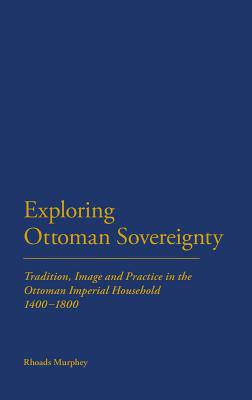
- Retrait gratuit dans votre magasin Club
- 7.000.000 titres dans notre catalogue
- Payer en toute sécurité
- Toujours un magasin près de chez vous
- Retrait gratuit dans votre magasin Club
- 7.000.0000 titres dans notre catalogue
- Payer en toute sécurité
- Toujours un magasin près de chez vous
Exploring Ottoman Sovereignty
Tradition, Image and Practice in the Ottoman Imperial Household, 1400-1800
Rhoads MurpheyDescription
Is it possible to identify the 'essence' of Ottoman kingship? And if so, what were the core motivating principles that governed the dynasty over its 600 year lifespan and how continuous and consistent were they? Following the death of the dynasty's eponymous founder Osman in 1324, 35 successors held the throne. Despite the wide range of character traits, dispositions and personal preferences, they led the expansion, stagnation and eventual collapse of the empire. Rhoades Murphey offers an alternative way of understanding the soul of the empire as reflected in its key ruling institution: the sultanate. For much of the period of centralized Ottoman rule between ca. 1450 and 1850 each of the dynasty's successive rulers developed and used the state bureaucratic apparatus to achieve their ruling priorities, based around the palace and court culture and rituals of sovereignty as well as the sultan's role as the head of the central state administrative apparatus.
Sovereignty was attached to the person of the sultan who moved (with his court) both often and for prolonged stays away from his principal residence. In the period between 1360 and 1453 there were dual capitals at Bursa and Edirne (Adrianople) and even after 1453 several Ottoman sultans showed a preference for Edirne over Istanbul. Even Sultan Suleyman the Magnificent - held by the Ottomans, western contemporaries and modern analysts alike to be the pinnacle and paragon of Ottoman kingship - spent far more time away from his residence at the Topkapi Palace than in it. This book explores the growing complexity of the empire as it absorbed cultural influences and imperial legacies from a wide diversity of sources each in turn engendering a further interpretation of existing notions of kingship and definitions of the role and function of the ruler.
Spécifications
Parties prenantes
- Auteur(s) :
- Editeur:
Contenu
- Nombre de pages :
- 370
- Langue:
- Anglais
Caractéristiques
- EAN:
- 9781847252203
- Date de parution :
- 01-10-08
- Format:
- Livre relié
- Format numérique:
- Genaaid
- Dimensions :
- 157 mm x 236 mm
- Poids :
- 680 g

Les avis
Nous publions uniquement les avis qui respectent les conditions requises. Consultez nos conditions pour les avis.






